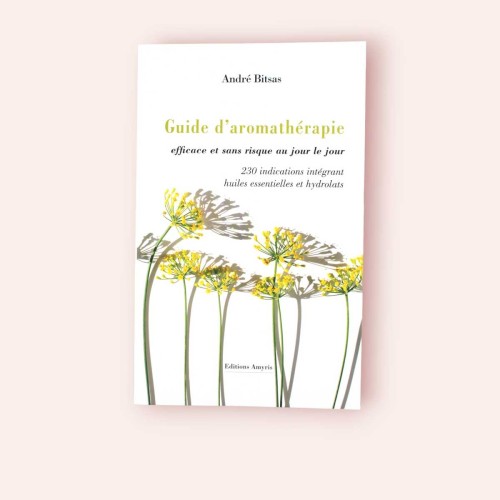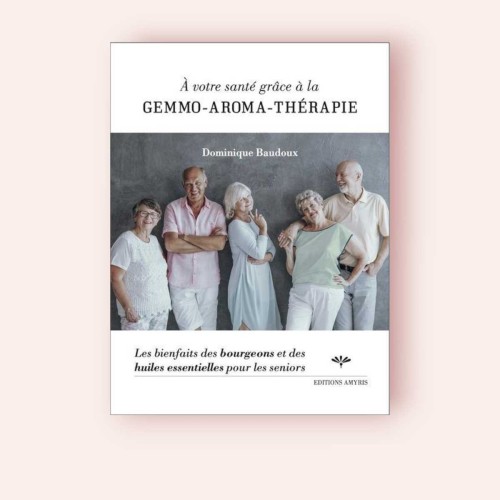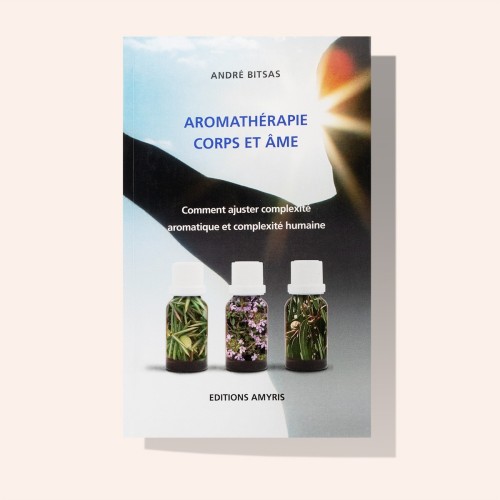A practical and easy guide to using essential oils on your skin
Applying essential oils to the skin is undoubtedly the easiest way to benefit from the many (not to say countless!) properties of aromatherapy. The cutaneous interface not only allows you to benefit from the cosmetic virtues of essential oils, but also to bring well-being to the entire organism through their passage from the epidermis into the bloodstream. But this application should not be taken lightly and must comply with a few basic principles: essential oils are very powerful plant concentrations and can have repercussions, sometimes impressive, on the skin. In this Bioflore guide, we take a look at the best practices for using essential oils on each skin type.
Article by Amandine Devillard, aromatologist
How to use essential oils on the skin: The guide to follow
One basic rule seems to apply when applying essential oils to the skin: they should never (with a few exceptions) be applied directly to the skin and should always be diluted in a vegetal oil.
The skin is the most accessible interface for aromatherapy treatments because it offers a large surface area - it is the heaviest organ in the human body - and it allows the molecules of essential oils, most of which have a low molecular weight, to pass through. Their lipophilic nature also means they have a perfect affinity with our skin.
Some essential oils pose no problem if you apply a drop from time to time to a very small area of the skin (lavender essential oil, tea tree essential oil, etc.), while others have an immediate negative impact, such as organic Ceylon cinnamon essential oil, which will heat or even burn the skin, depending on how fine and sensitive it is.
You can take advantage of a wide range of aromas to soothe, tone, rebalance and purify the skin, as well as acting on the body's internal systems to stimulate digestion, boost sluggish venous circulation, or even relieve day-to-day anxieties.
Essential oils can be used on the skin in addition to hydrosols, but be careful: the two substances cannot be mixed, as essential oils are not water-soluble! Do you want to adopt the best aromatic routine for your skin, combining essential oils, hydrosols and plant oils?

Essential oils and the skin: what are the risks and contraindications?
What problems can arise from using essential oils in cosmetics and skincare products?
Essential oils may be part of a natural daily routine, but they do have some contraindications that require a few precautions to avoid certain problems. While some of the unpleasant consequences of essential oils are minor, some skin reactions attributed to misuse of essential oils are impressive.
Photosensitisation
Photosensitisation is an immune reaction following exposure to UV light. It can result from a drug interaction, lucitis (allergy to the sun), or a particular pathology (porphyria, lupus erythematosus, etc.). In aromatherapy, it's especially with bergamot essence that you need to be careful. One of its compounds, bergapten, causes phototoxicity, leading to extensive red patches, often accompanied by papules. And this doesn't just happen in the sun! Daylight is enough to activate bergapten, sometimes even through clothing. In this case, you have two choices:
- replace bergamot essence in your synergy applied to the skin;
- choose a bergamot essence without bergapten, which avoids this disadvantage.
Also be careful with all citrus essential oils, which contain furocoumarins.
Irritation and dermal sensitivity
Because of their biochemistry, some essential oils react more strongly on the skin, causing irritation, itching, possibly redness and even dermatitis, which alters the fragile layer of the epidermis.
Essential oils above all contain phenols, very powerful aromatic compounds and anti-infectives of choice. These include essential oils of thyme, savory and oregano. Be careful, too, with clove essential oil, which contains eugenol, another phenol.
Ceylon cinnamon essential oil may be harmful to the skin, as it contains cinnamaldehyde, an aromatic aldehyde which is a real anti-infectious bomb, but which also attacks the skin. Be careful not to apply it repeatedly to the face and/or body, and certainly not undiluted!
Certain essential oils can randomly irritate more sensitive skin: exotic basil, tarragon and ajowan. Others can cause discomfort or irritability if oxidised. Keep your essential oils away from light and heat, and do not leave your bottles open.
Sensitisation and allergy
Essential oils come from natural plant resources. The wide variety of compounds they contain are potentially allergenic. The European Union publishes a list of them, notably for cosmetics regulations. This list includes 26 allergenic molecules, the majority of which are found in essential oils. This list is set to be considerably extended under new regulations, which increase the number of allergens to 80, both isolated molecules and complete essential oils. If you know you are allergic to one of these compounds, it is best to avoid applying essential oils and cosmetic products containing this molecule to the skin (geraniol, linalool and limonene are common examples).
What precautions should I take when using essential oils in my DIY beauty products?
To avoid skin problems caused by certain essential oils, just follow these simple tips. Let yourself be guided and consult the precautions for use for each of your essential oils.
Elbow test with essential oils
Have you recently purchased a new essential oil? Try the elbow test. Dilute one drop in a hazelnut-sized amount of vegetable oil and apply the mixture to the hollow of your elbow, where the skin is thinner. If a reaction should occur, it may appear fairly quickly, but we recommend you wait 24 to 48 hours to check your tolerance. Watch out for redness and itching on the elbow, but also elsewhere on the body. In this case, your body is probably sending you a message alerting you that this essential oil is not its best ally. Try to find an alternative.
Diluting essential oil
Essential oils should always be diluted in a vegetable oil (this is the simplest solution!), or incorporated into a neutral or DIY cosmetic product before applying to the skin, respecting the recommended doses.
A thorough knowledge of each essential oil
With our complete guide to essential oils, you can find out the properties of each essential oil. You can also check the contraindications in the ‘Precautions for use’ section, particularly if an essential oil is not recommended for pregnant women, for certain medical conditions or if it contains allergens. And if you really want to go further in mastering aromatherapy, EAA's Health and Wellbeing Aromatherapy course will give you all the reflexes you need for safe use.
Dosage compliance
Aromatherapy has a remarkable power of action. When a formula states 1 drop, don't add 2 or 3 more in the hope of a faster and even more beneficial effect! On the contrary, you run the risk of doing worse rather than better. In skin care products, a dosage of between 1% (in cosmetics) and 5% (for massage oils) of essential oils is quite sufficient.










